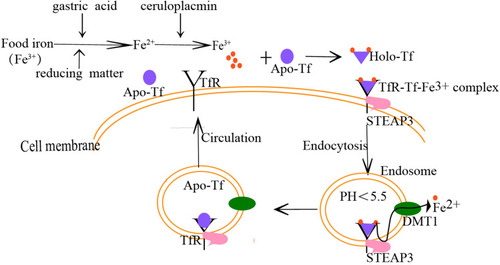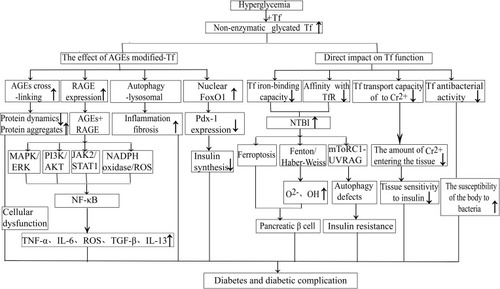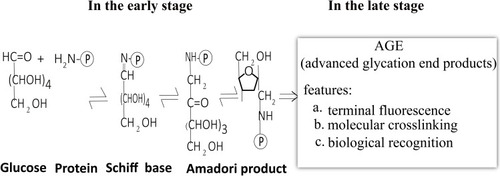Figures & data
Figure 1 The process of Tf binding to a receptor to transport iron. The iron (Fe3+) in food is reduced to “Fe2+ ”under the action of gastric acid and reducing substances, which is absorbed by intestinal mucosa cells, the absorbed “Fe2+ ” is oxidized as “Fe3+ by ceruloplasmin, then Fe3+ binds to Tf, and the conformation of Tf changes immediately after binding with Fe3+, which helps Tf to bind to the Tf receptor (TfR) on the cell membrane surface to form a “TfR-Tf-Fe3+” complex. Subsequently, the complex enters the cell through receptor-mediated endocytosis to form an endosome coated with clathrin. In the acidic milieu (pH<5.5) in the endosome, Fe3+ dissociates from Tf and is reduced to Fe2+ by metalloreductases such as six-transmembrane epithelial antigen of the prostate 3 (STEAP3) followed by transportation into the cytosol by divalent metal transporter 1 (DMT1).Following, the Tf/TfR complex recirculates to the cell surface, separates, and enters into the blood circulation for the next process of iron ion transport.

Figure 2 The roles and mechanism of non-enzymatic glycated Tf in diabetes and its complications.


